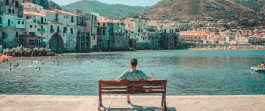
It started as a pilot project. Ten days, six cities, fourteen encounters. The plan was ambitious, maybe even impossible. But with the help of the wonderful team from Il Made in Sicily, a platform devoted to celebrating the island’s uniqueness and connecting its creatives at home and abroad, the picture began to form. We didn’t want just places. We wanted people, those who stay, create, and reinvent the island from within.
Because Sicily isn’t just one thing. It’s the most beautiful contradiction: generous and restless, ancient and experimental, layered with light, history, and the rhythm of life itself. You can read it through its faces: the artists, jewelers, dreamers, and doers who show that real change here begins not with policy, but with passion.
In Palermo, Veronica Mancuso plays with fire, clay, and instinct, creating ceramics that look both ancient and new. “I don’t follow the rules,” she smiles. “Every time I open the kiln, it’s like seeing a new planet.” Her work, full of bold geometry and earth tones, could easily stand in a design gallery in Milan and yet it belongs nowhere but Sicily. Not far away, architect Sebastiano Provenzano brings back the sea to the people with his redesign of Palermo’s Trapezoidal Pier: “Architecture here isn’t about power,” he says, “it’s about perspective and helping people see their city again.”
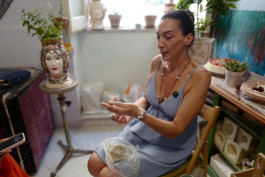
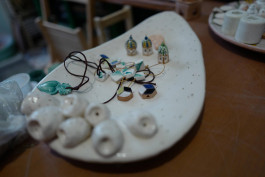


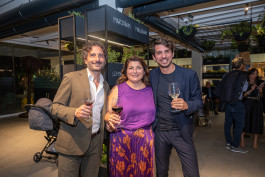


Down at the port, Marco and Constanza Durastanti, founders of the Costanza Filiera del Gusto group, and their partner Pasquale Dipollina, run three restaurants and nearly a hundred staff between Palermo and Cefalù. For them, cooking is culture. “We want people to taste where they are,” Pasquale says, his voice both calm and proud. “Excellence of the territory. That’s our only rule.” Their kitchens use only local flours, wines, herbs, and fish - a culinary ecosystem built entirely from Sicily itself. “You grow when you demand more from yourself,” he adds, “and you stay alive when you never stop learning.”
Nearby, Giovanni Callea, co-founder of Il Made in Sicily, tells stories that rarely make the news. It’s all about artisans, musicians, and people who craft meaning with their hands. “We give space to those whose stories would otherwise stay unseen,” he says. His dream is to open a museum which will be a home for Sicilians abroad, and for anyone curious to understand the island from within. He recalls an artwork his team once sent to Tokyo - broken on arrival, repaired by a Japanese artist using kintsugi. “That’s Sicily too,” he smiles. “We rise by mending.”
At Sperone167, on the edge of Palermo, Gaspare Monte points toward walls once gray and forgotten, now alive with color. “Art gave us dignity,” he says. Murals of women, workers, and children now stretch across the buildings, painted by artists from all over the world. His favorite piece? A phoenix. “Because it means freedom - the ability to rise again.”
He laughs when he adds, “We used to be invisible. Now journalists walk these streets. People look at us differently. The murals gave us a voice.”

Further north, Alberto Rizzo, chef of Osteria dei Vespri, bridges two Italys - the northern roots of his mother from Parma and the southern heritage of his father from Palermo. “That’s why our kitchen is both refined and emotional,” he says. “We respect the classic, but we cook with courage.” His tasting menus balance tradition and curiosity: Sicilian raw materials, northern precision, Mediterranean soul. “Mature cuisine,” he explains, “is one that listens to experience, to memory, to taste.”
In Piana degli Albanesi, jewelry designer Sergio Lucito continues a legacy that’s as golden as his pieces. His atelier, Gli Ori di Piana, has created jewelry that once appeared in Il Gattopardo, the legendary Visconti film. “My family has been making jewelry for generations,” he says. “It’s about preserving what is timeless - the Sicilian soul in metal.” His Byzantine-inspired filigree earrings, famously filmed in his atelie and worn by Angelique in Gattopardo, are as delicate as poetry: small pieces of light made by a man who speaks about history as if it were still alive.
But in Sicily, food and craft always come with philosophy. In nearby San Cipirello, Daniela Ragusa, founder of Marena, redefines Sicilian street classics for a new generation — arancine made from organic rice grown in Catania, saffron from Corleone, and bread from ancient grains. “Traditions grow like people do,” he says. “We can change everything if it makes the food cleaner.” He tells a story of a customer who claimed he couldn’t eat fried food: “I made him a bet,” he laughs. “He ate my arancina, then a cannolo and no acidity. I won.”

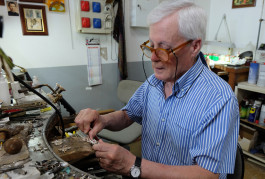
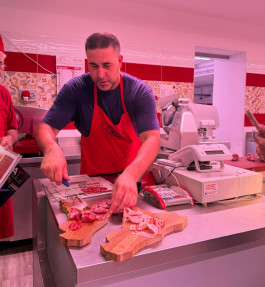
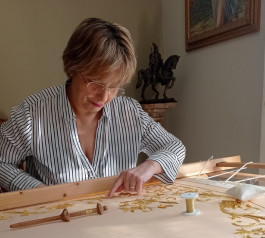
A few kilometers away, Salvatore Bilello perfects a mortadella so fragrant with fennel it once won national recognition. “It’s all about love for what you do,” he says. “You can feel it in the taste.”
And when you meet Maria Di Stefano, who keeps alive the nearly forgotten art of lace embroidery by hand in iana di Albanesi, you realize that every thread of this island holds a story.
In Cefalù, Gelal Ben Saad, founder of Neo Mediterraneo Vibes, serves cocktails like stories - each with rhythm, color, and a touch of nostalgia. “Sicily taught me how to slow down,” he says. “You come here to feel something again.”
Not far from him, a son of a fisherman and martial artist Antonio Papa describes the sea like a philosopher: “You set the nets, you wait for hours, and it’s silent. Then, at sunrise, the sea gives you back your patience. It’s meditation.”
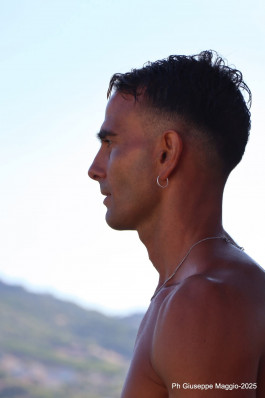
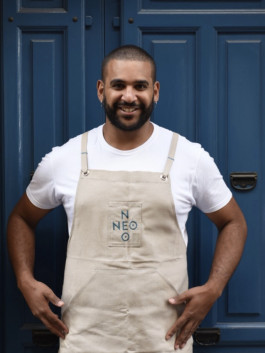
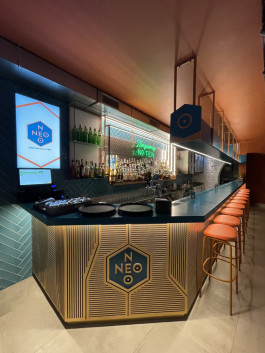
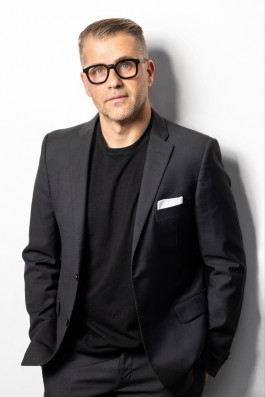
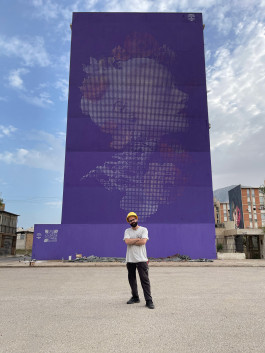
And then there’s Guido Spinello, co-founder of Bella Repertoire, the visionary behind Taormina’s Morgana and Nunziatina. “Sicily is where tradition meets design,” he says. “You can feel it alive.” He still laughs about the night Madonna came for dinner: “We didn’t know she was coming. At one in the morning she just walked in. By the end of the night, she was smiling and that’s Taormina.”
At the edge of the island, artist Angelo Crazy One paints huge murals that turn entire neighborhoods into galleries. His work blends geometry with human emotion, abstraction that, up close, becomes real faces. “My art is crazy because it’s alive,” he says. “From far, it’s abstract; from near, it’s people.” One of his works just have travelled to the Biennale Venezia 2026, bringing Palermo’s street voice to the world stage.
Listening to these 14 stories, you start to notice a pattern. When asked what they would change about Sicily, almost everyone answered the same: “The mindset.”
But you can tell they are already the change they wish to see - modern thinkers, innovators who respect roots while planting something new.
The quiet balance between tradition and evolution might be the real secret of Sicily’s longevity between earth and imagination. Combined with sun, honest food, and air free of rush and pollution, it’s no surprise that Sicily is home to some of the world’s longest-living people.
Faces of Sicily is more than a travel story. It’s an invitation to listen, taste and see how one island, through its people, keeps turning history into tomorrow.
Fourteen voices. One heartbeat.
Sicily — for the constantly curious.
In cooperation with Il Made in Sicily.
Related Articles:

It started as a pilot project. Ten days, six cities, fourteen encounters. The plan was ambitious, maybe even impossible. But with the help of the wonderful team from Il Made in Sicily, a platform devoted to celebrating the island’s uniqueness and connecting its creatives at home and abroad, the picture began to form. We didn’t want just places. We wanted people, those who stay, create, and reinvent the island from within.
Because Sicily isn’t just one thing. It’s the most beautiful contradiction: generous and restless, ancient and experimental, layered with light, history, and the rhythm of life itself. You can read it through its faces: the artists, jewelers, dreamers, and doers who show that real change here begins not with policy, but with passion.
In Palermo, Veronica Mancuso plays with fire, clay, and instinct, creating ceramics that look both ancient and new. “I don’t follow the rules,” she smiles. “Every time I open the kiln, it’s like seeing a new planet.” Her work, full of bold geometry and earth tones, could easily stand in a design gallery in Milan and yet it belongs nowhere but Sicily. Not far away, architect Sebastiano Provenzano brings back the sea to the people with his redesign of Palermo’s Trapezoidal Pier: “Architecture here isn’t about power,” he says, “it’s about perspective and helping people see their city again.”






Down at the port, Marco and Constanza Durastanti, founders of the Costanza Filiera del Gusto group, and their partner Pasquale Dipollina, run three restaurants and nearly a hundred staff between Palermo and Cefalù. For them, cooking is culture. “We want people to taste where they are,” Pasquale says, his voice both calm and proud. “Excellence of the territory. That’s our only rule.” Their kitchens use only local flours, wines, herbs, and fish - a culinary ecosystem built entirely from Sicily itself. “You grow when you demand more from yourself,” he adds, “and you stay alive when you never stop learning.”
Nearby, Giovanni Callea, co-founder of Il Made in Sicily, tells stories that rarely make the news. It’s all about artisans, musicians, and people who craft meaning with their hands. “We give space to those whose stories would otherwise stay unseen,” he says. His dream is to open a museum which will be a home for Sicilians abroad, and for anyone curious to understand the island from within. He recalls an artwork his team once sent to Tokyo - broken on arrival, repaired by a Japanese artist using kintsugi. “That’s Sicily too,” he smiles. “We rise by mending.”
At Sperone167, on the edge of Palermo, Gaspare Monte points toward walls once gray and forgotten, now alive with color. “Art gave us dignity,” he says. Murals of women, workers, and children now stretch across the buildings, painted by artists from all over the world. His favorite piece? A phoenix. “Because it means freedom - the ability to rise again.”
He laughs when he adds, “We used to be invisible. Now journalists walk these streets. People look at us differently. The murals gave us a voice.”


Further north, Alberto Rizzo, chef of Osteria dei Vespri, bridges two Italys - the northern roots of his mother from Parma and the southern heritage of his father from Palermo. “That’s why our kitchen is both refined and emotional,” he says. “We respect the classic, but we cook with courage.” His tasting menus balance tradition and curiosity: Sicilian raw materials, northern precision, Mediterranean soul. “Mature cuisine,” he explains, “is one that listens to experience, to memory, to taste.”
In Piana degli Albanesi, jewelry designer Sergio Lucito continues a legacy that’s as golden as his pieces. His atelier, Gli Ori di Piana, has created jewelry that once appeared in Il Gattopardo, the legendary Visconti film. “My family has been making jewelry for generations,” he says. “It’s about preserving what is timeless - the Sicilian soul in metal.” His Byzantine-inspired filigree earrings, famously filmed in his atelie and worn by Angelique in Gattopardo, are as delicate as poetry: small pieces of light made by a man who speaks about history as if it were still alive.
But in Sicily, food and craft always come with philosophy. In nearby San Cipirello, Daniela Ragusa, founder of Marena, redefines Sicilian street classics for a new generation — arancine made from organic rice grown in Catania, saffron from Corleone, and bread from ancient grains. “Traditions grow like people do,” he says. “We can change everything if it makes the food cleaner.” He tells a story of a customer who claimed he couldn’t eat fried food: “I made him a bet,” he laughs. “He ate my arancina, then a cannolo and no acidity. I won.”




A few kilometers away, Salvatore Bilello perfects a mortadella so fragrant with fennel it once won national recognition. “It’s all about love for what you do,” he says. “You can feel it in the taste.”
And when you meet Maria Di Stefano, who keeps alive the nearly forgotten art of lace embroidery by hand in iana di Albanesi, you realize that every thread of this island holds a story.
In Cefalù, Gelal Ben Saad, founder of Neo Mediterraneo Vibes, serves cocktails like stories - each with rhythm, color, and a touch of nostalgia. “Sicily taught me how to slow down,” he says. “You come here to feel something again.”
Not far from him, a son of a fisherman and martial artist Antonio Papa describes the sea like a philosopher: “You set the nets, you wait for hours, and it’s silent. Then, at sunrise, the sea gives you back your patience. It’s meditation.”





And then there’s Guido Spinello, co-founder of Bella Repertoire, the visionary behind Taormina’s Morgana and Nunziatina. “Sicily is where tradition meets design,” he says. “You can feel it alive.” He still laughs about the night Madonna came for dinner: “We didn’t know she was coming. At one in the morning she just walked in. By the end of the night, she was smiling and that’s Taormina.”
At the edge of the island, artist Angelo Crazy One paints huge murals that turn entire neighborhoods into galleries. His work blends geometry with human emotion, abstraction that, up close, becomes real faces. “My art is crazy because it’s alive,” he says. “From far, it’s abstract; from near, it’s people.” One of his works just have travelled to the Biennale Venezia 2026, bringing Palermo’s street voice to the world stage.
Listening to these 14 stories, you start to notice a pattern. When asked what they would change about Sicily, almost everyone answered the same: “The mindset.”
But you can tell they are already the change they wish to see - modern thinkers, innovators who respect roots while planting something new.
The quiet balance between tradition and evolution might be the real secret of Sicily’s longevity between earth and imagination. Combined with sun, honest food, and air free of rush and pollution, it’s no surprise that Sicily is home to some of the world’s longest-living people.
Faces of Sicily is more than a travel story. It’s an invitation to listen, taste and see how one island, through its people, keeps turning history into tomorrow.
Fourteen voices. One heartbeat.
Sicily — for the constantly curious.
In cooperation with Il Made in Sicily.
Related Articles:
You need to load content from reCAPTCHA to submit the form. Please note that doing so will share data with third-party providers.
More InformationYou need to load content from Turnstile to submit the form. Please note that doing so will share data with third-party providers.
More InformationYou are currently viewing a placeholder content from Facebook. To access the actual content, click the button below. Please note that doing so will share data with third-party providers.
More InformationYou are currently viewing a placeholder content from Instagram. To access the actual content, click the button below. Please note that doing so will share data with third-party providers.
More InformationYou need to load content from hCaptcha to submit the form. Please note that doing so will share data with third-party providers.
More InformationYou need to load content from reCAPTCHA to submit the form. Please note that doing so will share data with third-party providers.
More InformationYou are currently viewing a placeholder content from Turnstile. To access the actual content, click the button below. Please note that doing so will share data with third-party providers.
More InformationYou are currently viewing a placeholder content from X. To access the actual content, click the button below. Please note that doing so will share data with third-party providers.
More Information